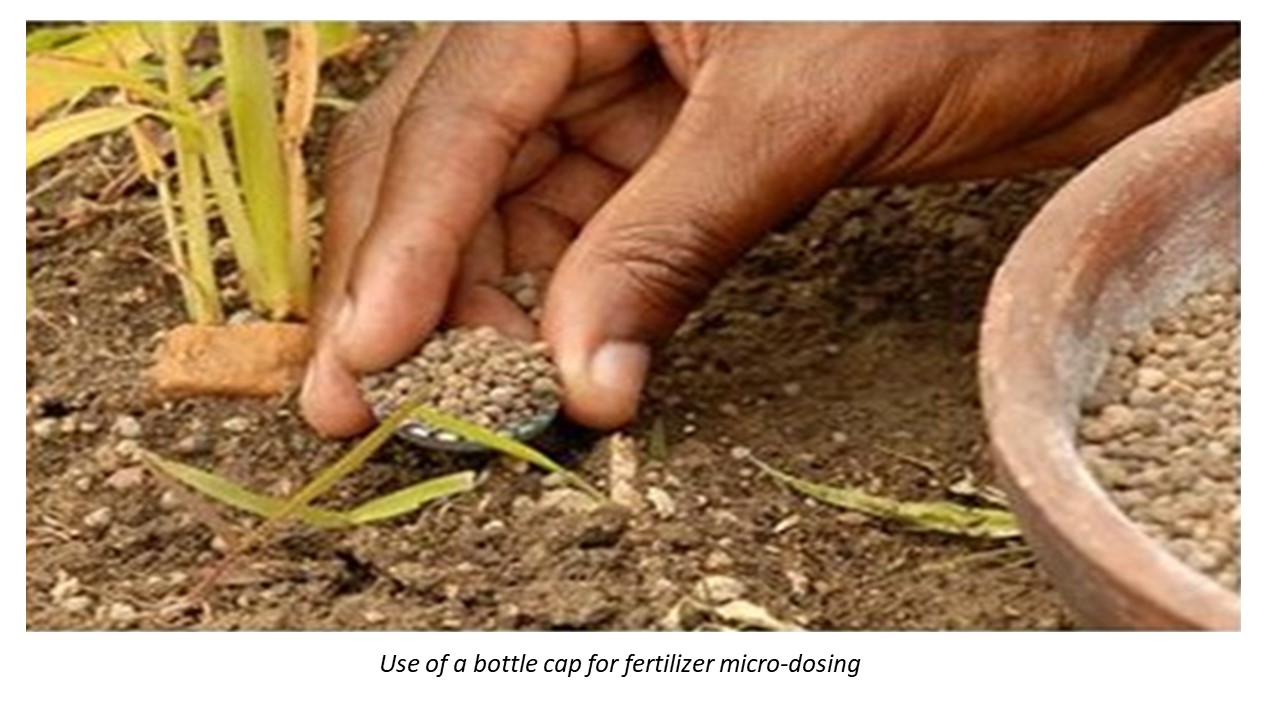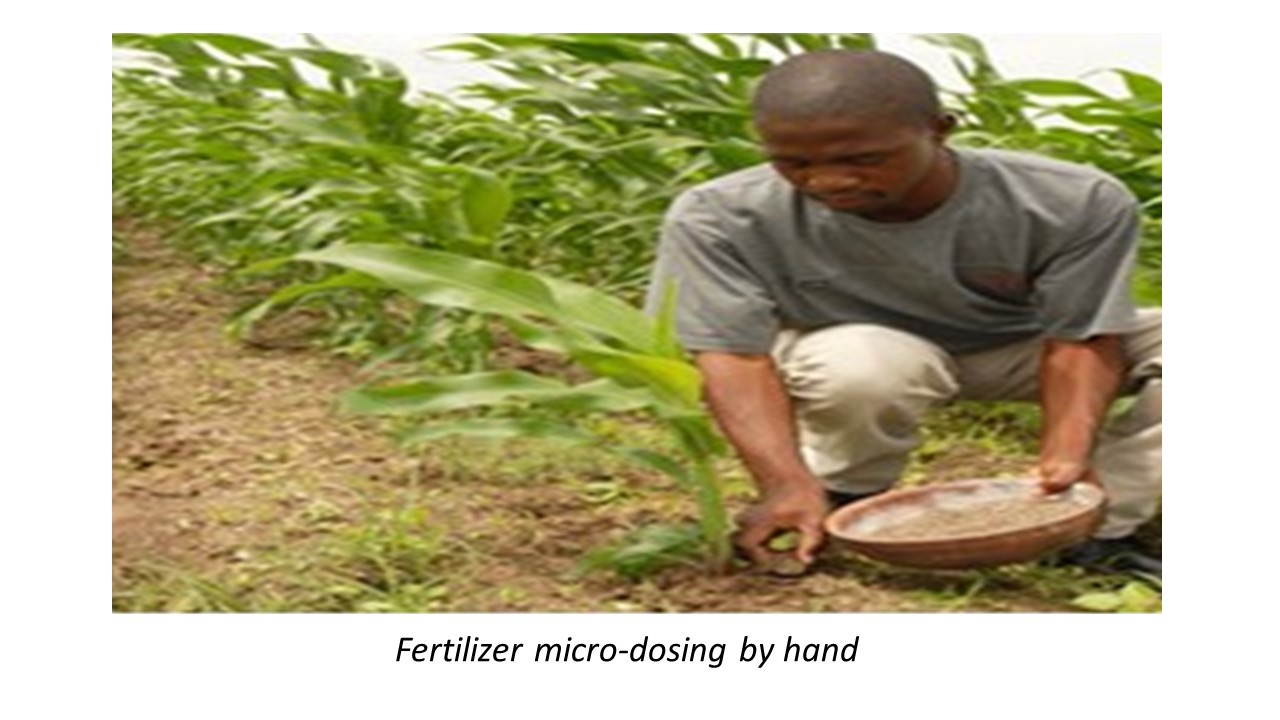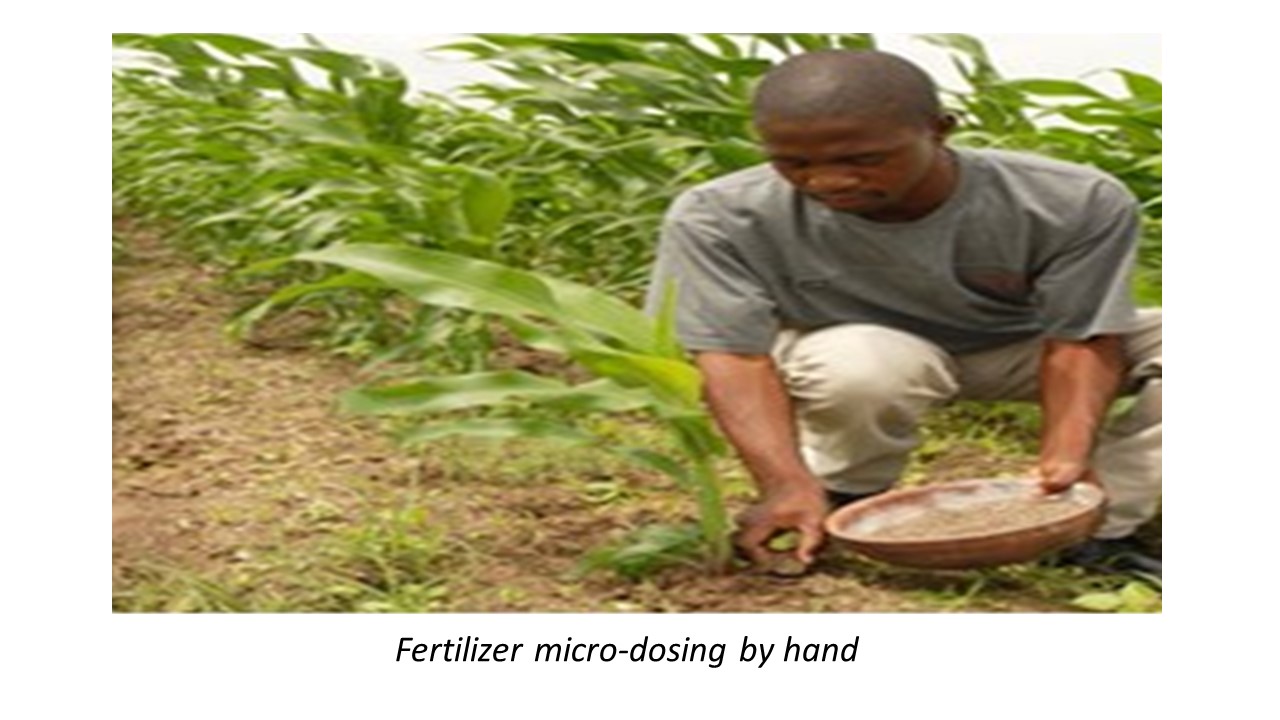Fertilizer Micro-Dosing to Enhance Yield and Use Efficiency
Summary
Most small-scale millet and sorghum farmers do not use recommended rates of mineral fertilizers. Those who so usually apply too little fertilizer by surface broadcasting, an inefficient approach. Risk of crop failure due to drought further discourages investment in fertilizer. As a result, insufficient nutrient replenishment and gradual soil fertility decline takes place. Micro-dosing is a form of precision agriculture based on the application of small amounts of fertilizer in a shallow hole at the base of each plant. The method offers a low-risk strategy for farmers as it uses small and affordable quantities of inputs. Because fertilizer is placed close to active plant roots, the crop establishes more quickly and can better absorb nutrients and water, circumventing problems of soil degradation. In this way, micro-dosing decreases investment costs of farmers and increases yield responses to lower rates of fertilizer application. Proportionally less nutrients from mineral inputs are lost to the environment and more are assimilated by sorghum and millet, especially if the practice is combined with input of organic matter, water harvesting in zaï pits and contour bunding techniques. Mechanized equipment is available for this operation.
About the Solution
Large areas of land across millet and sorghum growing areas in semi-arid areas of Africa are severely depleted in nutrients like nitrogen, phosphorus, and potassium, reducing yield and nutritional quality. Conventional fertilizer application methods rely upon top-dressing on the soil surface, posing a financial risk due to lower returns per unit input and land. Alternatively, concentrated placement of mineral fertilizer inside the planting hole or near the base of the plant by micro-dosing make more nutrients available to the crop and thereby enhances the growth of roots, grain and stover. This results in healthier crops that are better able to counteract mid- and late-season drought, increasing the climate resilience of food production. Promoting fertilizer micro-dosing among small-scale farmers requires that input supply companies provide appropriately formulated blends or compounds in 2-5 kg package sizes that match the nutrient requirements of crops and soils, making fertilizers affordable to more farmers. On the other hand, fertilizer micro-dosing should not be implemented over extended periods of time if it results in negative nutrient balances.
Micro-dose fertilizer application can be practiced in all millet and sorghum growing areas of Sub-Saharan Africa, including drylands in the Sahel, Eastern Africa, and Southern Africa. The technology of micro-dosing is particularly suitable for resource limited farmers working on degraded lands, who cannot afford “recommended” amounts of mineral fertilizers.
Mineral fertilizers formulations used for micro-dosing are based on availability of single, blended or compound types from local suppliers and nutrient deficiencies of croplands. It offers an effective strategy to replenish nutrient stocks in small-scale farming systems by allowing for gradually increased investment and improved organic matter recycling through greater availability of stover.
Micro-dosing is as simple as applying a couple pinches or a bottle cap full of fertilizer to each planting hole at the time of sowing or drilling it next to the base of the plants two weeks after emergence. Fertilizers must be covered with soil to prevent surface runoff and rapid volatilization. The total amount of fertilizer used in micro-dosing varies depending on the crop type and planting density. For instance, millet grown at 16,666 plants per ha requires about 50 kg of fertilizer whereas sorghum cultivated at a density of 26,666 plants per ha requires about 100 kg of fertilizer per ha. Applying compound fertilizer NPK (15-15-15) at a rate of 60 kg ha-1 is equivalent to 6 g per plant/hill, and DAP (18-46-0) at a rate of 20 kg ha-1 corresponds to 2 g per plant/hill. It is advised that nitrogen fertilizer be applied in 2 or 3 splits over the growing season by micro-dosing urea at times when rainfall is received. This strategy allows for high yields and reduces financial losses in drought-stricken years by avoiding wastage of fertilizers.
Commercialization
Commercially available
Solution Images
Institutions




